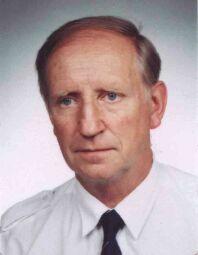
- prof. Ing. Jiří ©vejcar, CSc.
- tel.: 541 143 102, fax: 541 143 198
- e-mail: svejcar@fme.vutbr.cz
- prof. Ing. Rudolf Foret, CSc.
- tel.: 541 143 191
- e-mail: foret@fme.vutbr.cz,
- Jana Černá
- tel.: 541 143 196
- e-mail: cerna@fme.vutbr.cz,
DEPARTMENT OF STRUCTURAL AND PHASE ANALYSIS
 |
Head:
|
Department's objective is to analyse and interpret various structural problems of materials, forensic analysis, and material control using advanced analytical methods. Further, to perform its own research and offer to students, both undergraduate and PhD, courses on analytical methods and advanced materials. Students could use computer softwares like "The Materials Selector" (Edited by Norman A. Waterman and Michael F. Ashby), "ASM Handbook", "Materials Science on CD-ROM" etc. Also literature: main world journals on-line or hardcopy, and relevant books (hardcopy).
Department consists of:
1. Electron Microscopy Laboratory
is equipped with Philips XL30 scanning electron microscope equipped with microanalysis and orientation imaging attachments. Microanalysis is performed either by Electron Dispersive Spectrometry system supplied by EDAX or by wave dispersive spectrometer from Oxford Instruments (inclined spectrometer Microspec WDX 400). OIM (Orientation Imaging Microscopy) attachment was produced by TLS, the subsidiary of EDAX. There is also JEOL 840 scanning electron microscope with two WDS vertical spectrometers and EDS X-ray microanalysis (AN 1000 from Link Systems). Antiquated TEM JEOL 100C is used mainly for replicas. Other TEM tasks are performed in co-operation with the Institute of Czech Academy of Sciences equipped with Philips CM12 STEM microscope with EDAX 9900 microanalysis, partly also digitilized. For diffraction analysis in TEM, software CaRIne v. 3.1 is used.
2. X-ray Diffractometry
Main instrument of the laboratory is X'Pert PRO X-ray diffraction system from Philips, allowing exact meausremnt of the X-ray diffraction lines at RT or increased temperatures. Siemens D-500 diffractometer equipped with heating stage up to 1600 °C and positionally sensitive detector is also installed. The diffractometers are used, e.g., for quantitative analysis of retained austenite and carbides content in steels, identification of unknown substances (corrosion products, phases arising after the sintering of ceramics, biocompatible materials), determination of phase stability and thermal expansion coefficients, phase analysis of Ni alloys.
3. Image analysis
Department is using software LIM Lucia G for Image Analysis. Analysed structures are either on-line recorded by digital camera in light microscope, obtained from digitalized images from SEM or TEM, or obtained off-line from various sources.
4. Metallographic Laboratory
The Laboratory is a pilot laboratory of Struers Co. and is therefore equipped with latest instruments for preparation of metallo- and ceramographic specimens. Light microscopes (Zeiss Jena) are installed.
5. Scanning tunnelling microscopy
The scanning tunnelling microscope TESCAN is built in JEOL JSM 25S scanning electron microscope. It is used for surface analysis with atomic resolution or near atomic resolution , e.g. for the study of surface relief caused by fatigue loading.
Research projects under study in the Laboratory are backed by Grants from various sources: